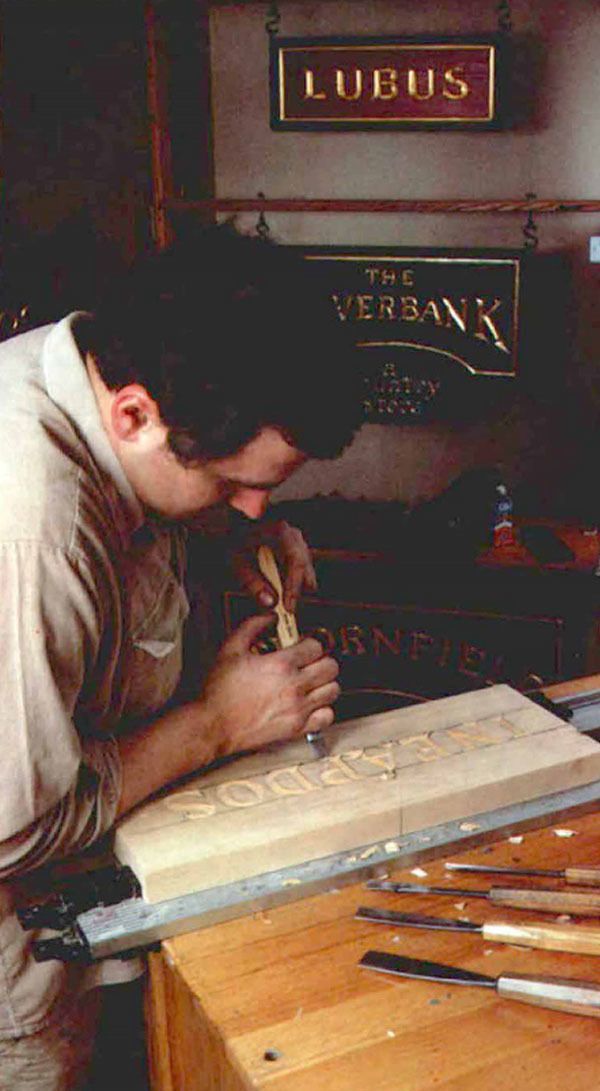
Synopsis: Fine Woodworking’s Roger Holmes talked to Frank Cushwa, of Kent, Connecticut, about how he came to the art of carving lettered signs and how others can carve them. His technique is straightforward and involves using carving tools rather like knives, pushing or pulling them to make slicing instead of chopping cuts. The technique is similar to chip carving, in that several angled cuts pop a chip of triangular cross section of wood to create letter elements. Straight cuts are made with a skew chisel. Photos show all the hand positions during cutting, and the article includes advice on lettering.
I first saw Frank Cushwa carve a sign at the Bridgewater Fair, a cattle-and-cotton candy fest up the road from us in rural Connecticut. With a single skew chisel and a couple of gouges, Cushwa incised eight or so 2-in.-high letters in a piece of pine, a nameplate for someone’s vacation home. Layout and carving took all of about 20 minutes. It was a handsome sign. Though sketched freehand, the letters were nicely formed and spaced, and the carving was crisp. Until then, I had thought letter carving required complicated layout and a trunkful of carving tools. Cushwa made it look easy—well, accessible at least—so I decided to look him up and find out more.
Cushwa and his wife, Rhonda, run their business, Kent Carved Signs, out of a building just behind an old railroad station in the center of Kent, Conn. While Frank carves at a waist-high, lecturn like bench, Rhonda tends the phone, the order book and the computer. It’s clear from a glance at the 15 or 20 signs displayed around the showroom that carving is only part of the job. Most are painted pine or poplar, though some are polyurethaned butternut or walnut. After carving, letters are either painted to contrast with background colors, or gilded with 23K gold leaf. Gold leaf is popular for commercial signs—doctors’ and lawyers’ offices, bakeries, shops. Gold, according to Cushwa, reflects light as well as status and makes a letter stand out like nothing else. It is also expensive: 2-in.-high letters, for example, cost $5 apiece painted, $8 each gilded.
Cushwa is a self-taught carver. After receiving his master’s degree in music performance on the clarinet, he decided against music as a career—he liked the playing, but hated the hustling required to make it pay. In 1979, a chance encounter with a sign carver demonstrating his work in a shopping mall planted the seed of his new career. A carver in Amherst, Mass., told him a bit about tools and techniques; type books provided a short course in lettering. Experiment and practice did the rest.
Cushwa’s technique is straightforward and involves using carving tools rather like knives, pushing or pulling them to make slicing instead of chopping cuts. The technique is similar to chip carving, in that several angled cuts pop a chip of triangular cross section out of the wood to create an element of a letter. Straight cuts are made with a skew chisel that is as large as practical for the letter size.
From Fine Woodworking #59
For the full article, download the PDF below:
Fine Woodworking Recommended Products

Suizan Japanese Pull Saw

Veritas Wheel Marking Gauge

Stanley Powerlock 16-ft. tape measure





















Log in or create an account to post a comment.
Sign up Log in